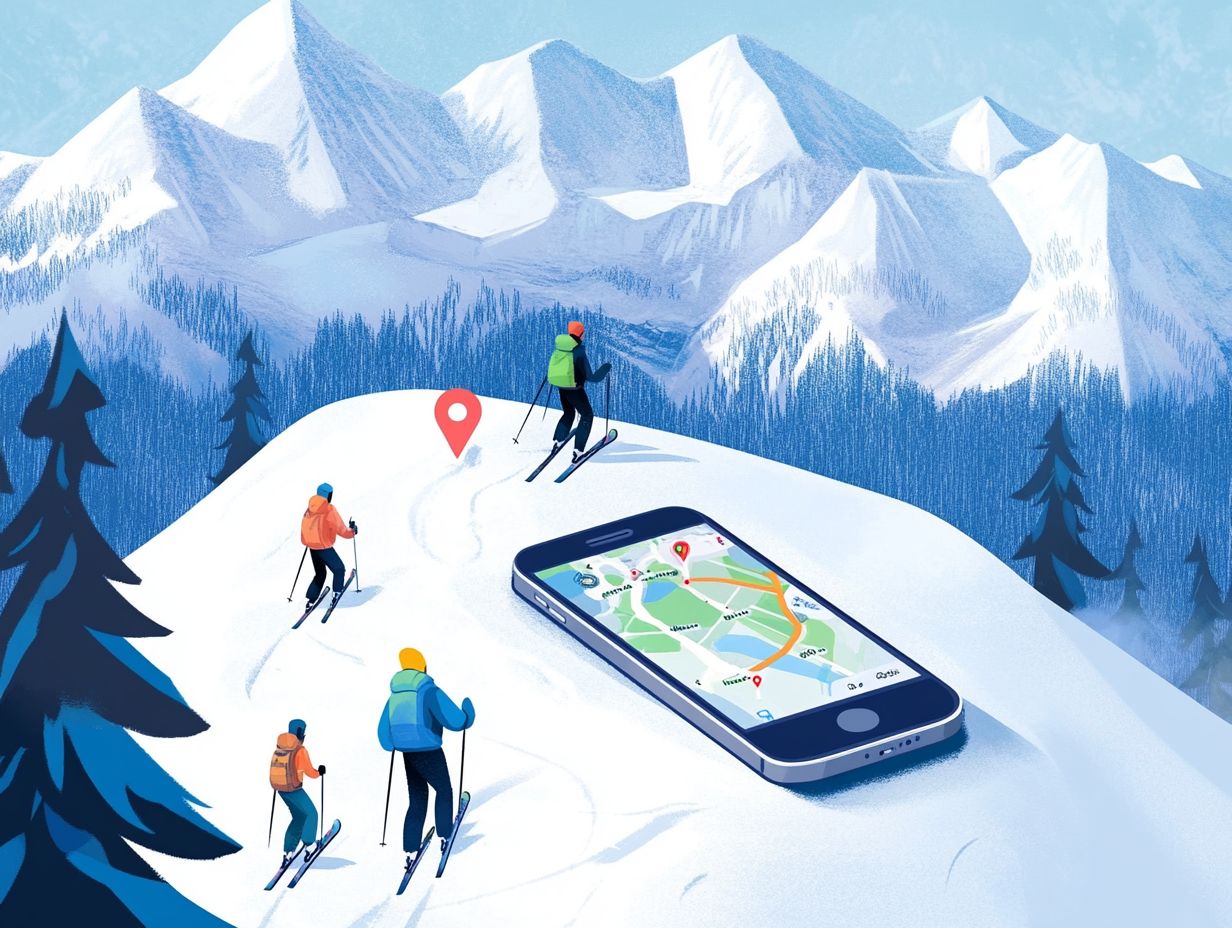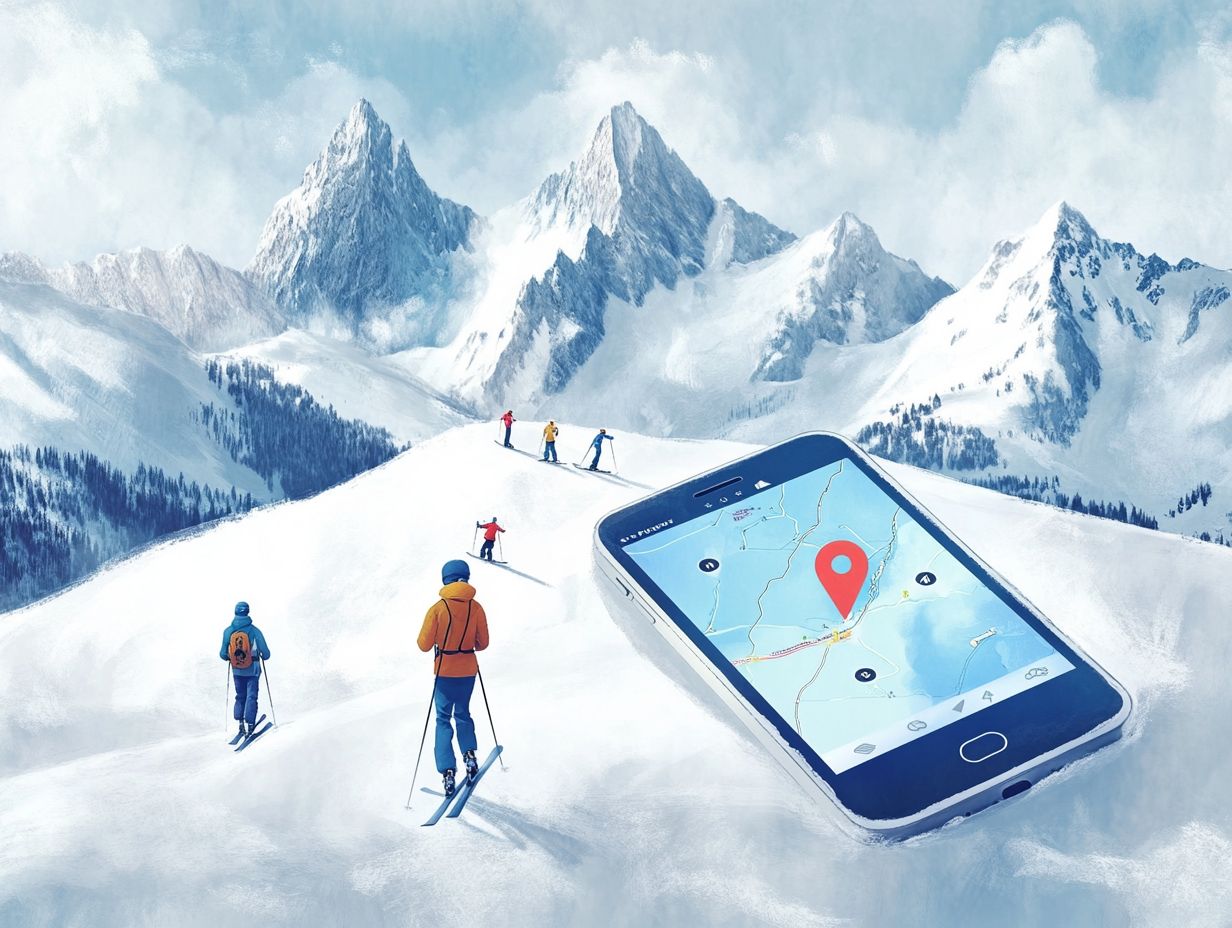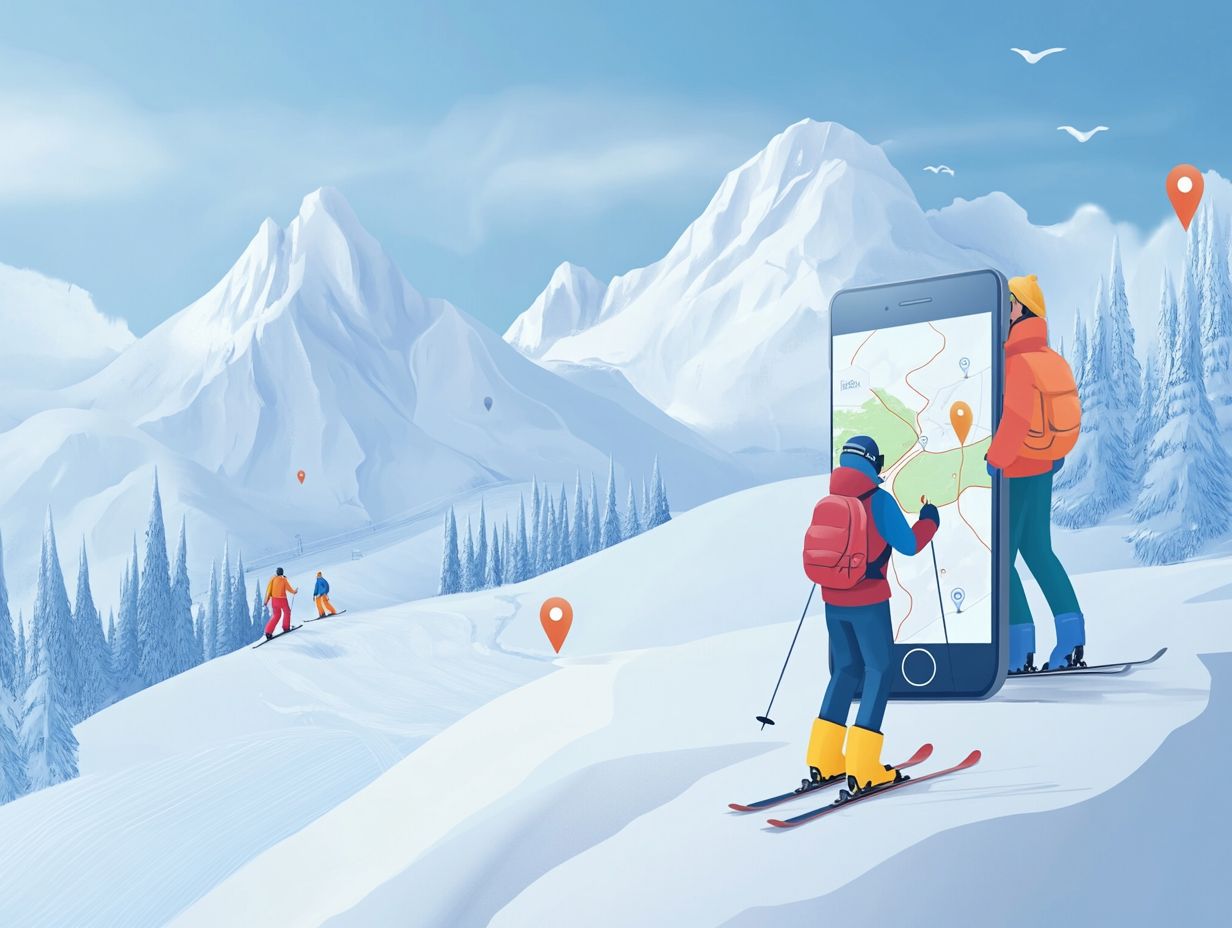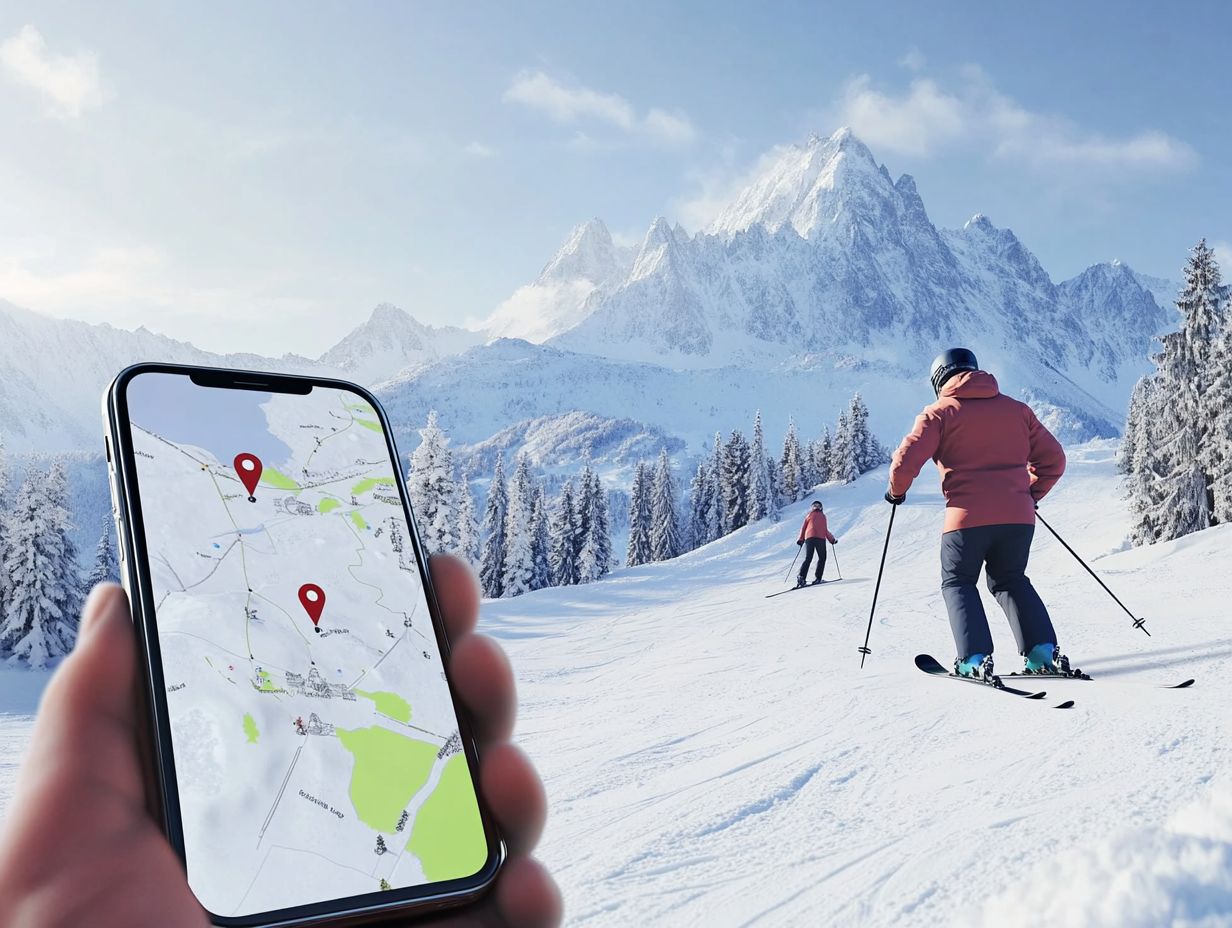Ski tourism plays a significant role in driving economic and social growth for many regions by attracting adventure seekers and winter enthusiasts, as well as promoting ski culture and adventure tourism. As the industry continues to evolve, it is essential to understand how to effectively reach and engage ski tourists through data-driven marketing and strategic partnerships. This article examines the role of mobile location data and geolocation in identifying ski tourists, highlighting how it can enhance targeted advertising strategies and create personalized recommendations. Discover how leveraging this technology, including location intelligence and real-time tracking, can increase customer satisfaction and draw more visitors to the slopes.
The Importance of Ski Tourism

Ski tourism plays a vital role in the economies and social structures of regions renowned for winter sports by fostering a vibrant ski community and promoting winter sports.
Each year, ski resorts attract millions of tourists who seek outdoor activities and adventure experiences. This influx of visitors generates substantial revenue through ski pass sales and holiday packages, while also fostering community engagement, cultural exchange, and supporting local attractions that enhance the local experience.
Additionally, industry trends indicate a growing interest in sustainable tourism practices and environmentally friendly initiatives aimed at reducing the environmental impact of tourism activities. As such, ski tourism is a significant aspect of both local economies and winter tourism planning.
Economic and Social Impact
The economic impact of ski tourism encompasses not only the direct revenue generated by ski resorts and ski equipment rental but also the revenue produced by various local businesses that benefit from increased patronage, including accommodation choices.
This broader economic influence extends beyond the resorts, as the influx of visitors positively affects sectors like dining, retail, and entertainment, with tourists seeking experiences beyond skiing, such as local attractions and nearby amenities.
Ski tourism can also create seasonal jobs and stimulate local entrepreneurship, encouraging residents to open shops or services tailored to the specific needs of winter sports tourists, such as ski-related content and adventure tourism services.
Tourism analytics indicate that these visitors tend to be high spenders, resulting in an overall enhancement of the community’s infrastructure and services. The demand generated by ski tourism may also prompt community investment in sustainable tourism development initiatives and infrastructure improvements, fostering a better environment for both residents and visitors.
Using Mobile Location Data to Identify Ski Tourists

Mobile location data has emerged as a valuable resource for analyzing the behaviors, visitor flow, and preferences of ski tourists. This data enables stakeholders in the ski industry to utilize geolocation services and real-time tracking to collect information about visitor movement patterns and their interactions with ski resorts.
By gaining insights into travel patterns, trip planning, and customer segmentation, businesses can tailor their offerings to enhance the user experience and create personalized ski trip itineraries.
How Mobile Location Data Works
Mobile location data operates through GPS tracking and geolocation technology, which captures visitors’ movements and interactions with ski resorts, offering valuable insights into trip planning, travel behavior, and user engagement.
By utilizing satellite signals, this technology accurately pinpoints the location of mobile devices, enabling ski resorts to analyze patterns such as popular ski trails, peak visit times, and areas that may require additional resources or infrastructure improvements.
When combined with advanced tourism analytics tools, ski resorts can enhance their marketing strategies and personalize the customer experience using consumer insights and behavior analysis.
For example, real-time notifications about ski conditions or special offers can be sent to visitors based on their location, leveraging geo-fencing and location-based services. This tailored communication leads to increased customer satisfaction and mobile engagement, ultimately encouraging repeat visits and visitor retention.
Benefits of Using Mobile Location Data

The benefits of mobile location data for ski resorts include increased customer loyalty, enhanced user experience, and predictive analytics that enable resorts to anticipate travel preferences and customer needs.
This data allows ski resorts to implement targeted marketing strategies and targeted advertising, delivering timely messages to ski tourists. For instance, they can promote specific offerings, such as discounts on lift tickets or ski rentals, using seasonal promotions when users are likely to be near the resort and in a purchasing mindset.
Furthermore, mobile location data can improve engagement rates by allowing ski resorts to send relevant messages to visitors at opportune moments, such as alerts about weather conditions, promotional campaigns, or personalized activity suggestions based on their location and preferences.
By offering tailored experiences that cater to the unique needs of ski tourists through personalized recommendations and attraction strategies, ski resorts can foster stronger relationships with their customers, ultimately leading to greater visitor loyalty.
Attracting Ski Tourists with Mobile Location Data
Attracting ski tourists through mobile location data involves utilizing location-based advertising and destination marketing strategies that cater to various customer segment preferences and travel influencers.
By leveraging visitor insights and consumer data, these approaches aim to enhance engagement and provide a more tailored experience for potential travelers through digital engagement and cross-promotions.
Targeted Marketing Strategies

Targeted marketing strategies that utilize mobile location data enable ski resorts to create customized advertising campaigns tailored to the individual preferences, demographics analysis, and motivations of ski tourists, thereby enhancing their overall experience.
By leveraging real-time insights into customer behavior and mobile user interface data, resorts can determine where guests are spending their time and which amenities they are using, whether it’s a cozy lodge, gourmet dining, or specific ski slopes.
Location-based advertising techniques allow marketers to reach prospective guests through mobile apps and social media integration at the moments they are most likely to make a booking.
Additionally, organizing community events such as ski workshops, ski education, or themed nights fosters a sense of community while promoting word-of-mouth advertising through social proof.
Together, these efforts not only capture attention but also provide ski tourists with personalized experiences that perfectly align with their needs, supported by customer journey data and market trends.
Personalized Experiences
Personalized experiences for ski tourists are essential for enhancing user engagement, mobile commerce, and customer satisfaction, as they enable resorts to cater to the specific needs and desires of individual visitors during their skiing holidays.
Ski resorts can leverage visitor data and demographics to analyze booking behaviors, preferences for specific activities and events, and satisfaction ratings for existing services. This data facilitates the creation of tailored packages and activities bundles that align with distinct visitor experiences, such as family-friendly options focused on children’s activities and amenities, or thrill-seeker experiences featuring guided extreme sports.
By incorporating real-time information from tourist interactions on ski apps and data visualization, resorts can adapt their offerings on the fly, adjusting snow lesson schedules or suggesting nearby dining options based on users’ locations. These initiatives foster an environment in which guests feel valued and recognized, ultimately enhancing their overall skiing experience and increasing user-generated content.
Improving Customer Satisfaction
Enhancing customer satisfaction in ski tourism can be achieved by analyzing online reviews, customer feedback, and engagement metrics, which enables resorts to adjust their services to better align with the preferences of ski tourists.
To accomplish this, resorts should actively collect data from customers by soliciting feedback through surveys, social media, and direct conversations, ensuring an open channel for candid communication and understanding visitor demographics.
By prioritizing customer experience and gathering qualitative feedback, ski resorts can identify pain points and preferences that will ultimately inform their service offerings and improve vacation planning.
Engagement metrics provide quantitative data on how customers interact with services, helping ski resorts identify trends, search behavior, and areas that need improvement.
The insights gained from both customer feedback and engagement metrics not only assist ski tourism businesses in enhancing their customer service practices but also contribute to an improved overall tourist experience, including visitor retention and competitive analysis, which is expected to increase customer loyalty and satisfaction.






